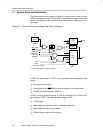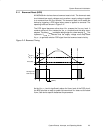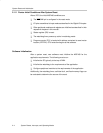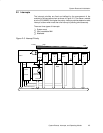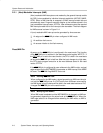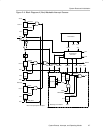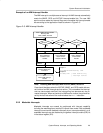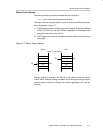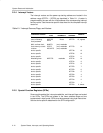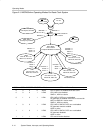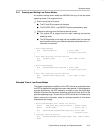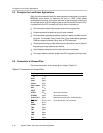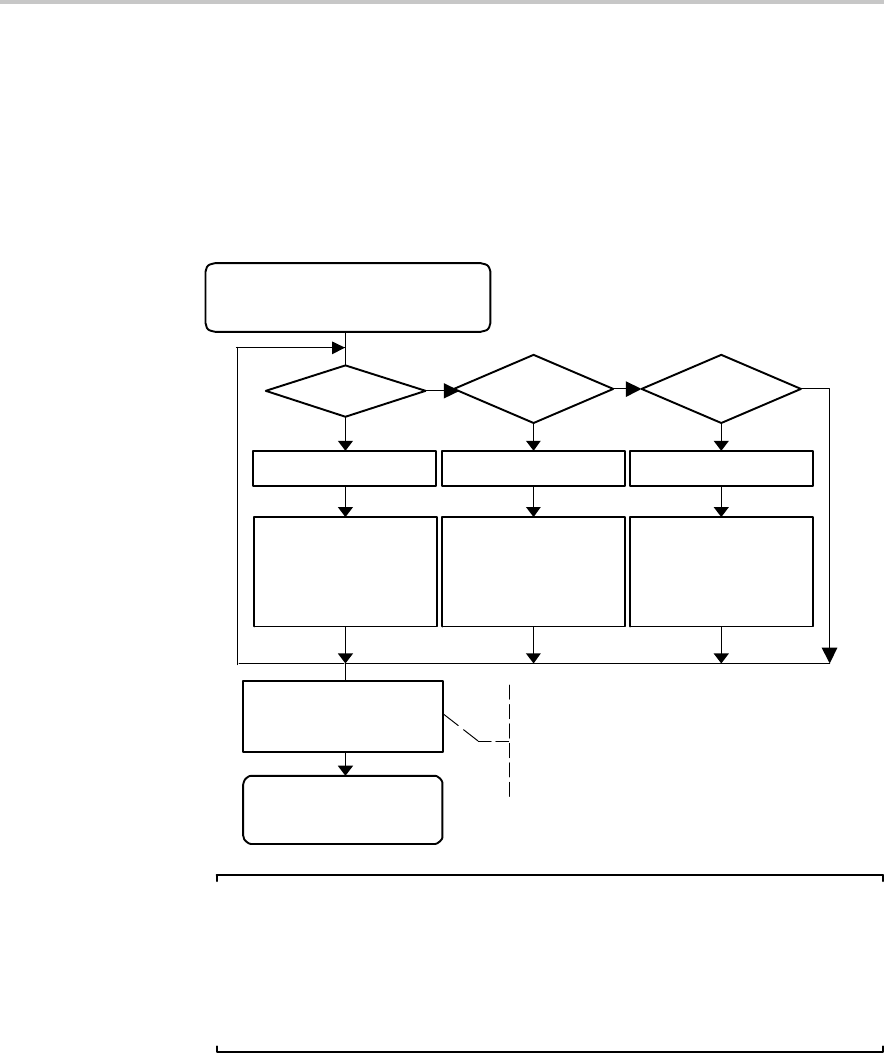
System Reset and Initialization
2-9System Resets, Interrupts, and Operating Modes
Example of an NMI Interrupt Handler
The NMI interrupt is a multiple-source interrupt. An NMI interrupt automatically
resets the NMIIE, OFIE and ACCVIE interrupt-enable bits. The user NMI
service routine resets the interrupt flags and re-enables the interrupt-enable
bits according to the application needs as shown in Figure 2−5.
Figure 2−5. NMI Interrupt Handler
yes
no
OFIFG=1
yes
no
ACCVIFG=1
yes
Reset ACCVIFG
no
NMIIFG=1
Reset NMIIFGReset OFIFG
Start of NMI Interrupt Handler
Reset by HW:
OFIE, NMIIE, ACCVIE
User’s Software,
Oscillator Fault
Handler
User’s Software,
Flash Access
Violation Handler
User’s Software,
External NMI
Handler
Optional
Set NMIIE, OFIE,
ACCVIE Within One
Instruction
RETI
End of NMI Interrupt
Handler
Example 1:
Example 2:
BIS #(NMIIE+OFIE+ACCVIE), &IE1
BIS Mask,&IE1 ; Mask enables only
; interrupt sources
Note: Enabling NMI Interrupts with ACCVIE, NMIIE, and OFIE
Care should be taken when the ACCVIE, NMIIE, and OFIE enable bits are
set inside of an NMI interrupt service routine. This re-enables the interrupt
and can cause stack overflow if the interrupt flag has become set, due to
nested interrupts. When set inside of an NMI service routine, they should be
set by the last instruction of the routine before the RETI instruction.
2.2.2 Maskable Interrupts
Maskable interrupts are caused by peripherals with interrupt capability
including the watchdog timer overflow in interval-timer mode. Each maskable
interrupt source can be disabled individually by an interrupt enable bit, or all
maskable interrupts can be disabled by the general interrupt enable (GIE) bit
in the status register (SR).




